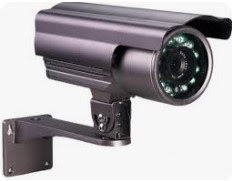There are several types of CCTV cameras designed for different purposes, environments, and surveillance needs. Here are some common types:
i. Dome Cameras: Dome cameras
are named for their domeshaped housing. They are commonly used indoors but can
also be used outdoors. They are often vandalproof and offer a discreet
surveillance option.
ii. Bullet Cameras: Bullet
cameras are cylindrical in shape and are often used for outdoor applications.
They are typically weatherproof and offer longdistance viewing capabilities.
iii. PTZ Cameras (Pan Tilt Zoom): PTZ cameras
can be remotely controlled to pan, tilt, and zoom to cover a larger area. They
are often used in larger surveillance systems where flexibility and control are
important.
iv. Box Cameras: Box cameras
are traditional CCTV cameras that offer high image quality and flexibility in
lens selection. They are often used in situations where customized lenses or
specialized features are required.
v. Wireless Cameras: Wireless
cameras transmit video signals wirelessly, which can simplify installation and
reduce the need for cables. They are commonly used in situations where running
cables is difficult or impractical.
vi. Network/IP Cameras: Network
cameras, also known as IP cameras, transmit video data over an IP network,
allowing for remote viewing and management. They are often used in modern
surveillance systems for their scalability and flexibility.
vii. Thermal Cameras: Thermal
cameras detect heat signatures rather than visible light, making them useful
for applications where lighting conditions are poor or where detecting heat
signatures is important, such as in perimeter security or search and rescue
operations.
As for tools required for installing
and maintaining CCTV cameras, here are some common ones:
i. Drill and Drill Bits: Used for
mounting cameras and running cables through walls or ceilings.
ii. Screwdrivers and Screws: Necessary
for securing camera mounts and housings.
iii. Cable Crimper and Connectors: Used for
terminating and connecting cables.
iv. Cable Tester: Ensures that
cables are properly connected and functioning.
v. Ladder: Needed for
accessing high places where cameras may be mounted.
vi. Power Supply and Adapters: Provide
power to the cameras and other equipment.
vii. Monitor and/or Laptop: Used for
testing and configuring cameras during installation.
viii. Cable Management Tools: Such as
cable ties, clips, and conduits, for organizing and securing cables.
ix. Voltage Tester: Ensures that
power sources are properly grounded and safe to use.
x. Camera Positioning Tools: Such as
alignment tools or laser levels, to ensure cameras are positioned correctly for
optimal coverage.
xi. Protective Gear: Such as
gloves and safety goggles, especially when drilling or working at heights.








0 Comments